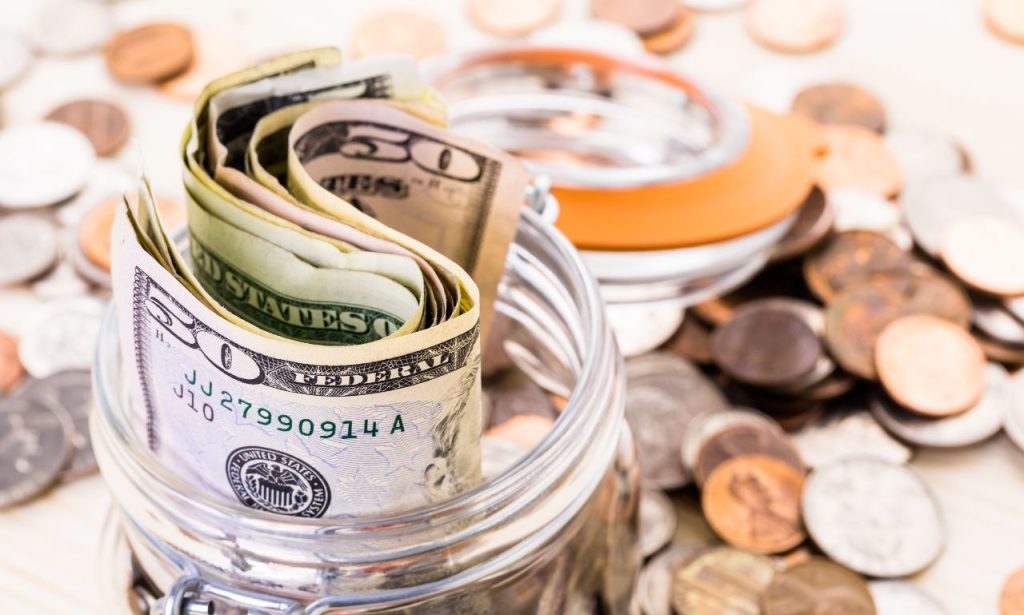Saving $10,000 in just a year might sound daunting, especially if you’re living on a tight budget. But guess what? With the right approach, discipline, and a solid plan, it’s entirely possible. Whether you’re trying to build an emergency fund, work toward a financial goal, or simply improve your overall financial stability, saving $10,000 can significantly impact your future.
This guide will provide practical, actionable steps to help you achieve your goal of saving $10,000 in a year. We’ll discuss everything from budgeting to cutting unnecessary expenses and finding ways to increase your income.
Why Set a Savings Goal of $10,000?
Setting a savings goal, such as saving $10,000 in a year, provides you with a clear target. It helps you prioritize your spending habits and adjust your lifestyle to achieve your financial goals. By focusing on this milestone, you can create a financial cushion for emergencies, invest in your future, or even prepare for significant life events.
Achieving this goal also builds financial confidence, making it easier to set and accomplish bigger goals, like saving for retirement or a down payment on a home. So, let’s dive into practical strategies for how to save $10,000 in a year.
Breaking Down the Numbers

Saving $10,000 may seem like an intimidating goal, but breaking it down into smaller, manageable parts makes it more attainable. To save $10,000 in a year, you need to set aside:
- $833 per month
- $192 per week
- $27.40 per day
Looking at it this way, saving $10,000 starts to feel much more manageable. By taking small steps consistently, you can make steady progress toward your goal.
Step-by-Step Plan on How to Save $10,000 in a Year
1. Create a Detailed Budget
The first step in achieving your savings goal is to create a detailed budget. Budgeting helps you understand your monthly income and monthly expenses and highlights areas where you can save.
- Track all income sources, including your primary salary, side hustles, or passive income.
- Categorize your expenses into essential expenses (like rent, utilities, and groceries) and discretionary expenses (such as dining out, entertainment, and hobbies).
- Review your variable expenses, such as groceries and transportation, and find ways to cut back.
A clear budget acts as a financial map that guides you toward your savings goal. Tools like budgeting apps or a simple spreadsheet can make the process much easier.
2. Open a High-Yield Savings Account
To save effectively, it’s crucial to use the right type of account. A high-yield savings account offers better interest rates than a traditional account, allowing your savings to grow faster.
Consider automating a direct deposit from your checking account to your high-yield savings account every month. This ensures that saving becomes a habit and happens consistently. Over time, the annual interest rate can help boost your savings balance without much extra effort on your part.
3. Cut Unnecessary Expenses
One of the most effective ways to save is by cutting unnecessary expenses, also known as discretionary spending. Consider areas where you can reduce costs, such as:
- Canceling Subscriptions: Review services like streaming, magazines, and even gym memberships that you may not be using regularly.
- Cut Back on Dining Out: Preparing meals at home instead of eating out can help you save hundreds each month. Focus on cooking in bulk and using leftovers creatively.
- Reduce Entertainment Costs: Consider free or low-cost activities, such as spending quality time with friends at home or exploring local parks.
- Impulse Buys: Before purchasing anything that wasn’t planned, enforce a 30-day rule. This 30-Day Evaluation Period allows you to reconsider whether you really need the item, reducing impulse purchases.
4. Find Ways to Increase Your Income
If you’re unable to cut costs enough to meet your savings goal, consider boosting your monthly income. There are many ways to earn extra income, even if you have a full-time job.
- Take a Part-Time Job: Picking up a part-time job on weekends or evenings can provide the additional income needed to meet your goal.
- Freelance or Side Gigs: If you have skills such as writing, graphic design, or data entry, you can find freelance opportunities online to generate extra cash.
- Sell Unused Items: Go through your home and identify items that are no longer in use. Selling these items online can create some extra money that can go directly into your savings.
5. Automate Your Savings

Automating your savings is a great way to make sure you stay on track without having to think about it constantly. Set up automatic transfers from your checking account to your high-yield savings account each payday. This creates a sense of commitment, and your savings grow on a regular basis.
6. Curb Your Spending Habits
Analyzing your spending habits is another way to determine where you can cut back. By examining your spending trends, you can identify areas where you can reduce costs. Tracking expenses helps you visualize your spending and allows you to make informed decisions.
Consider implementing a spending freeze, where you limit yourself to only essential expenses for a month. This can help you put more money toward your savings.
7. Take Advantage of Cash Back and Rewards
There are many apps and credit cards that offer cash back for your purchases. If you use a debit card or credit card responsibly, you can maximize cash back and reward programs to add extra savings to your goal. Just make sure to pay off your credit cards in full to avoid high-interest charges.
8. Implement the 52-Week Money-Saving Challenge
Another way to save $10,000 in a year is by following a week money-saving challenge. For instance, a 52-week challenge can involve saving a set amount each week, gradually increasing as the year progresses. This helps to build the discipline needed to save larger amounts over time.
9. Build an Emergency Fund
While saving $10,000 is a great financial goal, it’s also important to build an emergency fund for unexpected expenses. This fund acts as a financial buffer, so you don’t need to dip into your main savings when emergencies arise.
Having an emergency fund gives you peace of mind and protects your savings progress. Ideally, your emergency fund should cover three to six months of basic living expenses.
10. Set Realistic Savings Targets and Milestones
To stay motivated throughout your savings journey, break down your savings goal into smaller milestones. These can be monthly or quarterly targets, such as saving $2,500 every three months. Tracking these savings milestones allows you to see the progress you’ve made and keeps you motivated to achieve your ultimate target.
11. Avoid High-Interest Debt
Paying off high-interest debt like credit card debt should be a priority when trying to save. The interest paid on these types of debts can erode your savings progress, making it harder to achieve your goal. Consider a debt repayment plan that allows you to systematically pay off your debt while maintaining your savings target.
Investing as Part of Your Savings Strategy

Saving $10,000 in a year isn’t just about cutting costs—it can also involve investing to help your money grow. Consider options such as:
- Mutual Funds: Investing in mutual funds can provide a good rate of return over time.
- Dividend Stocks: Companies that pay dividend payments can help generate passive income.
- Retirement Accounts: Contributing to retirement accounts like 401(k)s and individual retirement accounts can grow your savings for long-term benefits. The contributions are often tax-advantaged, meaning you may also lower your taxable income.
While investing comes with risks, over time, the annual returns from investments can help you meet and exceed your financial goals.
Fun Savings Challenges to Consider
- 30-Day No-Spending Challenge: Go 30 days without buying anything other than necessities.
- Savings Connect: Connect with a friend who also wants to save money. You can keep each other accountable and even have a friendly competition.
- Round-Up Saving Apps: Use round-up apps like Acorns to invest spare change, making it easier to reach your goal.
Conclusion
Saving $10,000 in a year is an ambitious yet achievable goal if you commit to making changes in your spending habits, cutting unnecessary expenses, increasing your income, and automating your savings. By following the strategies outlined here, you can reach your financial goal while also learning to make smarter financial decisions. Remember, the key is consistency and commitment—every dollar saved brings you closer to your goal.
ALSO READ: Ways To Save $1,000 Fast, In 30 Days Or Less
FAQs
Yes, it is possible, but it will require discipline, careful budgeting, and possibly finding ways to earn extra income. The key is to focus on cutting unnecessary expenses and maximizing your savings rate.
Prioritize paying down high-interest debt first. Consider using any extra income or savings to pay off debt, as this will reduce the interest you owe and free up more money for savings.
Yes, a high-yield savings account offers better interest rates compared to regular savings accounts, helping your money grow faster.
Once you have built an emergency fund, investing part of your savings in options like mutual funds or retirement accounts can offer better returns and help grow your wealth over time.





